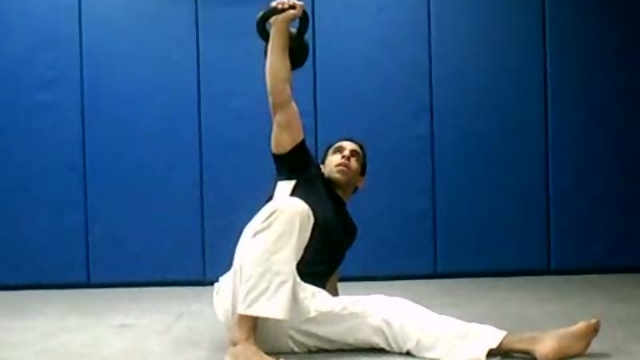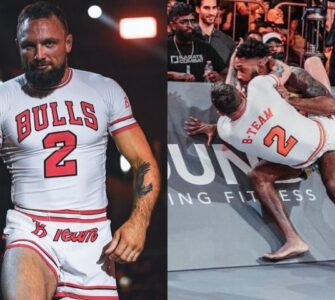How will you love to describe yourself? As a grappler? or as a strength trainer? If you contrive to be successful on the mat you better figure it out here fairly promptly. There are lots of basic differences between them. One is a kinda performer who strength trains and another one just grapples. Now if you are still confused, check this out:
Simply it can be said that a grappler is someone who only cares for on-the-mat performance. His or her basic training focuses on how to defeat the opponents by the end of the match. Strength work, conditioning etc aren’t specifically about grappling but they are added only to improve the techniques of grappling. A strength trainer, on the other hand, cares only about his own body structure. By now if you figured out that you are the second one then you need not go through this article more. There are many schooled and experienced people who can help you to succeed for those quests.
But, if you think you are a grappler or want to then be with me.
There are a few matters that I can tell about a serious Grapplers:
They are great physically.They might have bad knees and shoulders. Even elbows and ankles, too. Also, their back & neck probably not in a good state.
This sport is really not easy at all so even if, they are looking good now that will be not guaranteed
To get a useful development, a specific well-planned strength program is needed: Check this site. I’ve applied the following plan with many grapplers and they were amazed at its benefit. The routine is too straight way simple – get up and push ups and swings. For a grappler not doing get, ups are like leaving cards on the board. The get up keeps your shoulders healthy. There is one more great advantage that is, it has similarities to movement in grappling, such as sit outs, sit up sweeps, and even hip escapes.

At Hardstyle Physical Training, we teach you to keep the body stable in the plank position at the same time your arms will produce some forces. According to Sherman, this is needed for sure fo core stability which is the ability to hold neutral spine while the branches oppose it. There should be no question about the importance for Swings. Swings will surely develop your hip power and believe me that can bring out an explosive shoot for takedowns for you. Not only that but also the upper back will be developed just as the deadlift does.
When we look at someone being properly trained, there is a different aspect to this, which we need to keep in mind: this is the power of correct breathing. When it comes to the outcome of a grappling or of an MMA fight, what you can often notice is that the winner has a solid pace of breathing, while the loser often being upset has a heavier, more confused pace of breathing. The pace and style of breathing are essential if we want to talk about proper sports conditioning.
High-Intensity Training is a specific style of training which consists of quick and extra intense workout sessions and a longer period of more relaxed movements. This style of training is often used by wrestlers too, who often need to be very quick when it comes to sudden submissions, after a period of experimenting the opponent’s abilities.
Breathing has a key importance in the training process. If you try and hold your breath during wrestling, it’s pretty much guaranteed that you won’t be able to hold it for long. During my experimenting and research about breathing, I’ve started to realized that wrestling can be easily compared to swimming. As soon as you try to breathe while your muscles are all stiff, you will much likely fail. In swimming, this mistake may even have lethal consequences.
During my research I have experimented with the two key types of breathing: the chest breathing and the belly – breathing and I have realized that when it comes to training, belly-breathing is much more useful, as in that it will not involve so many other muscles in the process: they will remain free for other activities. The easiest way to prove this is simply if you try this yourself: stand in front of the mirror, try chest breathing and belly breathing and notice how different your body and muscles react to them both. In wrestling, belly breathing is essential, leaving your upper-body free from any other muscle activity. This way, it’s way easier to secure a take-down or make an escape.
Based on this, I’ve decided to put theory into practice and next to using swings we also started to use a Hindu-style push-up system and the results are awesome! We start the training with doing get-ups for 20 minutes one on each side with weights (24 kg for men and 16 kg for women). The goal is to perform 7-8 get-up per side. The swings are practiced in sets of 10 with a heavy bell (32kg for men and 24kg for women). The trainees have to inhale before they put in power and exhale while standing up. This totals a 90 minute of training which is done twice a week giving time for trainees to recover and continue to improve while remaining fresh for the main training session.
Writer’s Bio:
Dan Chabert

Writer. Avid thinker. TV enthusiast. Friend of animals everywhere. Subtly charming coffeeaholic. Currently handling several websites such as Nicershoes, GearWeAre, Runnerclick and Monica’s Health Mag
If you are looking to take your martial arts skills to the next level, consider starting a strength and conditioning program.
Why are SUPERSETS the key to Nicky Rod’s “pump”?
- ADCC silver medalist Nicky Rod’s unique and simple workout tweaks will take you to BEAST MODE in no time!
- You don’t have to be a high level wrestler to get a high level GAS TANK!


















